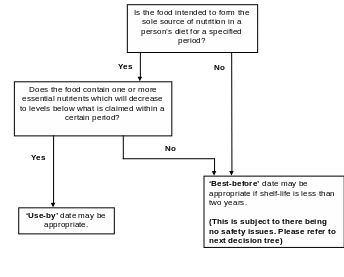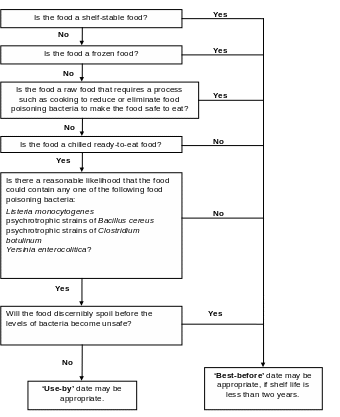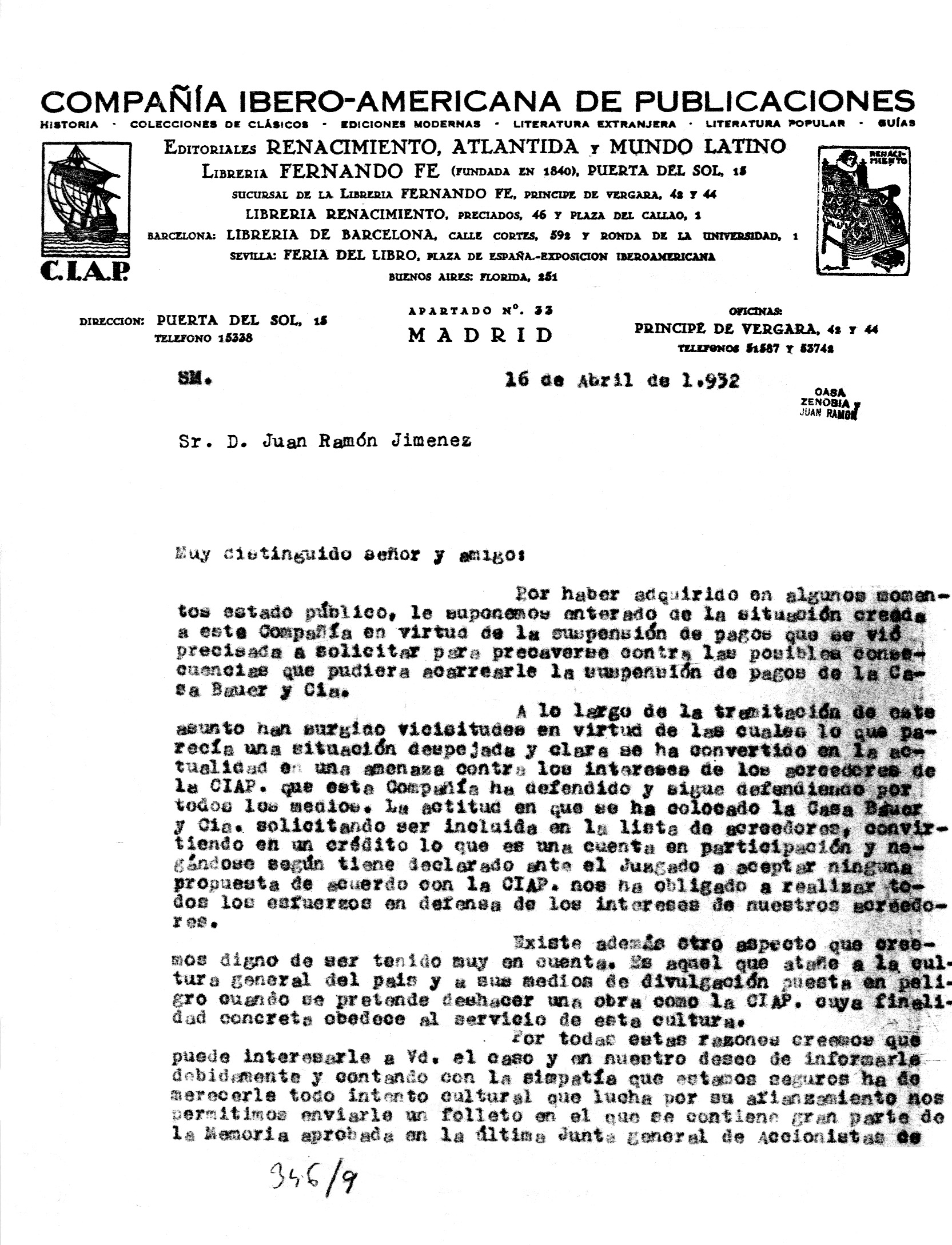DATE MARKING USER GUIDE TO STANDARD 125 – DATE
(COMPANY’S LETTER HEAD) APPLICATION FOR SNI MARKING PRODUCT CERTIFICATION11 OCTOBER 2021 APPLICATION FOR ADVISORY ACCESS MARKING APPLICANT’S
12 WORKSHOP “CONTAMINATED LANDS IN ACCESSION COUNTRIES BENCHMARKING HISTORICAL
15A NCAC 18A 2523 DEPTH MARKINGS AND SAFETY ROPES
171 ELISA DI DOMENICO DISPLACED REFERENCE AND TENSEPERSON MARKING
3 NEW APPROACHES FOR LOGISTICBENCHMARKING IN THE CLOTHING INDUSTRY


Date Marking
User Guide
to
Standard 1.2.5 – Date Marking of Food
December 2013

Contents
Food Standards in Australia and New Zealand 1
Responsibility of food businesses 1
1.2 Deciding when to use a ‘best-before’ or a ‘use-by’ date 3
1.3 What foods need a date mark? 4
1.4 Foods with expired date marking 4
2. Use and form of date marking 6
2.1 Prescribed form of date mark 6
2.2 Prescribed form of the date 6
3. Date marking for health reasons 7
4. Date marking for safety reasons 9
5.1 How do I calculate the shelf life of a food? 11
6. Statement of storage conditions 12
Where can I get more information? 13
Food Standards Australia New Zealand 13
Other user guides to the Code on the FSANZ website 13
Background
Food Standards in Australia and New Zealand
The Australian and New Zealand food standards system is governed by legislation in the states, territories, New Zealand, and the Commonwealth of Australia; including the Food Standards Australia New Zealand Act 1991 (the FSANZ Act).
The FSANZ Act sets out how food regulatory measures are developed. It created FSANZ as the agency responsible for developing and maintaining the Australia New Zealand Food Standards Code (the Code).
Responsibility for enforcing the Code in Australia rests with authorities in the states and territories and the Commonwealth Department of Agriculture for imported food; and with the Ministry for Primary Industries in New Zealand.
Responsibility of food businesses
This User Guide is not a legally binding document. It is designed to help interested parties understand provisions in the Code.
This User Guide reflects the views of FSANZ. However, the User Guide cannot be relied upon as stating the law. FSANZ is not responsible for enforcement of the Code or for providing advice on food compliance issues. In Australia, state or territory government agencies are responsible for enforcing and interpreting the Code. In New Zealand this is the responsibility of the Ministry for Primary Industries, public health units or local governments. Legal requirements may also change, for example, as government regulations are made or changed and as courts determine cases on food law in Australia and New Zealand.
Food businesses should obtain legal advice to ensure they are aware of developments in the law and any implications of such developments.
As well as complying with food standards requirements, food businesses must also continue to comply with other legislation.
In Australia, this legislation includes the Competition and Consumer Act 2010; the Imported Food Control Act 1992; and state and territory fair trading Acts and food Acts.
In New Zealand, this legislation includes the Food Act 1981 and Fair Trading Act 1986.
Disclaimer
FSANZ disclaims any liability for any loss or injury directly or indirectly sustained by any person as a result of any reliance upon (including reading or using) this guide. Any person relying on this guide should seek independent legal advice in relation to any queries they may have regarding obligations imposed under the standards in the Australia New Zealand Food Standards Code.
Purpose of this User Guide
The purpose of this User Guide is to provide an overview on the date marking provisions set out in Standard 1.2.5 – Date Marking of Food and on whether and how to date mark food.
1. Date marking of foods
1.1 What is date marking?
Date marking provides consumers with a guide to the shelf life of a food, and is based on either quality attributes of the food or health and safety considerations. The date mark indicates the length of time a food should keep before it begins to deteriorate or, in some cases, before the food becomes less nutritious or unsafe. In Australia and New Zealand, there are two main types of date marking, these are ‘best-before’ and ‘use-by’. There is also a further option in relation to date marking of bread with a shelf life of less than 7 days, where a ‘baked-on’ date or ‘baked-for’ date may be used instead of a ‘best-before’ date – see section 1.5 – Date Marks for Bread below.
1.2 Deciding when to use a ‘best-before’ or a ‘use-by’ date
The food business attaching the label is responsible for deciding whether a ‘use-by’ date or a ‘best-before’ date is needed. This will depend on whether these foods need to be eaten within a certain time because of health or safety reasons. The decision trees in sections 3 and 4 may help with these decisions. Alternatively, you may wish to seek expert advice (see page 13 for further information).
What is a ‘best-before’ date?
A ‘best-before’ date is the last date on which you can expect a food to retain all of its quality attributes, provided it has been stored according to any stated storage conditions and the package is unopened. Quality attributes include things such as colour, taste, texture, and flavour, as well as any specific qualities for which you make express or implied claims, such as the freshness of the food.
A food that has passed its ‘best-before’ date may still be perfectly safe to eat, but its quality may have diminished.
The label on a package of bread with a shelf life of less than 7 days may include, instead of a ‘best-before’ date:
its ‘baked-on’ date; or
its ‘baked-for’ date.
The conditions required for these date marks are described in section 1.5.
What is a ‘use-by’ date?
A ‘use-by’ date is the last date on which the food may be eaten safely, provided it has been stored according to any stated storage conditions and the package is unopened. After this date, the food should not be eaten for health and safety reasons.
The ‘use-by’ date is restricted to foods which need to be eaten within a certain time because of health and safety reasons.
1.3 What foods need a date mark?
Clause 2 of Standard 1.2.5 requires most packaged foods for retail sale or catering purposes to have a date mark on the food. However there are some exemptions to these requirements, namely:
Foods that are generally exempt from labelling requirements, including date marking, are listed in Standard 1.2.1 – Application of Labelling and Other Information Requirements. For foods for catering purposes that are exempt from the requirement to bear a label, the date mark must be provided in documentation accompanying the food. The user guide to Standard 1.2.1 provides further information and guidance requirements for foods exempt from bearing a label (see page 13 for further information).
Individual serves of ice cream or ice confection.
Small packages of food (except where the food should be consumed by a certain date because of health or safety reasons).
Foods where the ‘best-before’ date of the food is two years or more.
Infant formula products are required to be labelled with a date mark even if the shelf life of the product is more than two years or if the product is in a small package. See Standard 2.9.1 – Infant Formula Products.
With the exception of packaged foods which require a ‘use-by’ date, and infant formula products, there are no requirements for packaged food with a shelf life of 2 years or more to have a date mark. However, a best-before date may assist manufacturers and retailers to use old stock first, and assist consumers to purchase foods still within their date marks.
|
Code references Standard 1.2.1 contains details of foods that are generally exempt from labelling requirements, including date marking. ‘Small package’ is defined in Standard 1.1.1 as – ‘a package with a surface area of less than 100cm2’. Clause 17 of Standard 2.9.1 – Infant Formula Products contains specific requirements in relation to date marking of these products. |
1.4 Foods with expired date marking
You can still sell food with an expired ‘best-before’ date, provided the food is not spoiled and complies with any other applicable legislation, e.g. it is not damaged, deteriorated or perished to an extent that affects its reasonable intended use, or it is not unsound or unfit for human consumption. The relevant authority should be contacted for further information.
Food must not be sold past its ‘use-by’ date, because consumption of the food may pose a health and safety risk. This prohibition is in clause 3 of Standard 1.2.5.
1.5 Date marks for bread
The label on a package of bread with a shelf life of less than 7 days may include a ‘baked on’ date or ‘baked for’ date, instead of a ‘best-before’ date.
What is a ‘baked-for’ date?
In relation to bread, a ‘baked for’ date means a date not later than 12 hours after the time the bread was baked. The ‘baked for’ date indicates the date the bread is being baked for, and provisions for this have been included in the Code to overcome problems associated with dating bread that is baked later in the day for sale the following day. This date cannot be later than 12 hours after the time the bread was baked. For example, bread that is baked after 12:00pm (midday) may include a ‘baked-for’ date that specifies the following day whereas bread baked before 12:00pm (midday) may not include a ‘baked-for’ date that specifies the following day.
What is a ‘baked-on’ date?
In relation to bread, a ‘baked on’ date means the date on which the bread was baked.
1.6 Other date marks
Subclause 7(1) of Standard 1.2.5 requires that the label on a package of food must not use a date marking system other than that prescribed by the Standard. It is common practice for some food businesses to use a ‘packed on’ date to indicate the freshness of the product. The Standard does not expressly permit nor prohibit the use of a ‘packed on’ date. However, as a ‘packed on’ date does not indicate the expected shelf life of the product, the ‘packed on’ date could not be used instead of the ‘best-before’ or ‘use-by’ date.
2. Use and form of date marking
2.1 Prescribed form of date mark
Subclauses 4(1) and 4(2) of Standard 1.2.5 require that a ‘best-before’ date must use the words ‘Best Before’, and a ‘use-by’ date must use the words ‘Use By’ (except for Food for Special Medical Purposes – see below).
Both must be accompanied by the date or a reference to where the date is located in the label, for example, ‘Best Before – see base of can’.
In relation to bread with a shelf life of less than 7 days, subclauses 4(3) and 4(4) require a ‘baked-for’ date to use either the words ‘Baked For’ or ‘Bkd For’ and a ‘baked-on’ date must use either the words ‘Baked On’ or ‘Bkd On’. Both must be accompanied by the date or a reference to where the date is located in the label.
Clause 13 of Standard 2.9.5 – Food for Special Medical Purposes, permits a label on a package of food for special medical purposes to use the words ‘Expiry date’ or words to similar effect instead of the words ‘Use By’, if the food is required to include a use-by date under Standard 1.2.5.
2.2 Prescribed form of the date
Clause 5 of Standard 1.2.5 requires that the ‘best-before’ date and ‘use-by’ date must consist at least of:
the day and the month for products with a ‘best-before’ date or ‘use-by’ date of not more than 3 months; or
the month and the year for products with a ‘best-before’ date or ‘use-by’ date of more than 3 months.
The ‘best-before’ date and ‘use-by’ date must be expressed in uncoded numerical form, other than the month, which may be expressed in letters. If the date mark consists of the day and month, the date mark must be expressed with the day preceeding the month, unless the month is expressed in letters, in which case the month can preceed the day. If the date mark consists of the month and year, the date mark must be expressed with the month preceeding the year. In all cases, the day, month and year as applicable, must be distinguishable.
Examples
In the case of ‘best-before’ or ‘use-by’ date of not more than 3 months:
‘28 Jan’ or ‘Jan 28’ or ‘January 28’ or ’28 January’ or ‘28 01’
In the case of ‘best-before’ or ‘use-by’ date of more than 3 months:
‘Jan 2008’ or ‘January 2008’ or ‘ 01 2008’
The dates must be legible and prominent such as to afford a distinct contrast to the background and in the English language, in accordance with the general requirements of Standard 1.2.9 – Legibility Requirements.
3. Date marking for health reasons
For certain foods, there may be health reasons for requiring date marking. This can include nutritional reasons, where the nutritional profile and maintenance of the levels of nutrients in the product are critical to the health of the consumer.
Special Purpose Foods
An example of this situation is the use of certain Special Purpose Foods in Part 2.9 of the Code, such as food for special medical purposes and infant formula products which provide the sole source of nutrition for people who are ill or who are unable to eat normal foods. Some nutrients are not stable and the amount of these in a food will decrease over time. Therefore, some foods need to be eaten within a certain period to ensure that they provide the claimed amounts of nutrients, and thereby achieve their intended purpose.
Hence, foods that fit this profile must be date marked with a ‘use-by’ date. This date will indicate the period the unopened food is expected to retain all nutrients in the correct amounts, provided it is stored according to any stated storage conditions.
Decision tree: applying a ‘use-by’ date for health reasons
The following decision tree provides an outline of the steps involved in a decion about whether a ‘use-by’ date needs to be applied to a food for health reasons, such as nutritional integrity.
Note: The circumstances with each food need to be considered individually and this decision tree is only to be used as a general guide.

4. Date marking for safety reasons
Safety reasons may include where food becomes microbiologically unsafe before discernibly spoiling. This includes where foods may contain unsafe levels of food poisoning organisms and the food does not show any sign of being spoiled, as the majority of food poisoning organisms do not spoil food. This may be the case with some chilled ready-to-eat foods. These foods are discussed below.
A food that discernibly spoils before posing a food safety risk would not need a ‘use-by’ date as spoilage can be detected by the consumer and the food then avoided. Spoiled food includes food that has become mouldy, rancid, soured, or stale.
‘Use-by’ dates do not usually apply to the following types of food:
shelf-stable foods such as canned foods, cereals, biscuits, soft drink, sauces, confectionery, flour and sugar – these foods either do not contain, or do not support the growth of, food poisoning bacteria
food such as ice cream, frozen vegetables, frozen meals, frozen fish and frozen meat – frozen food does not support the growth of food poisoning bacteria
most raw food such as meat, chicken and fish that is eaten in a cooked state – where the later process kills food poisoning bacteria that may be present.
Chilled ready-to-eat food
A chilled ready-to-eat food is a chilled food that is usually eaten in the same state as that in which it is sold. Such foods include those that may only undergo a mild heat treatment, such as reheating, before eating.
Ready-to-eat chilled foods may need a ‘use-by’ date – theses foods may pose a food safety risk because they will not be cooked before being eaten. Without further processing, such as cooking, to destroy food poisoning bacteria, some bacteria can grow to dangerous levels, even if the food is kept refrigerated, before the food noticeably spoils.
Ready-to-eat chilled foods may require a ‘use-by’ date if the food:
may contain food poisoning bacteria that will grow at refrigeration temperatures;
will support the growth of food poisoning bacteria that may be present to dangerous levels before the food has noticeably spoiled; and
will not be cooked or otherwise processed to make it safe before being eaten.
The bacteria of concern are those that will grow at refrigeration temperatures. These are:
Listeria monocytogenes
strains of Bacillus cereus which will grow at refrigeration temperatures
strains of Clostridium botulinum which will grow at refrigeration temperatures
Yersinia enterocolitica.
If you manufacture any chilled ready-to-eat food you must determine if your product could contain any of these bacteria and, if so, whether the product would support bacterial growth. You may wish to seek expert advice to determine this information.
Decision tree: applying a ‘use-by’ date for safety issues
The following decision tree provides an outline of the steps involved in a decision about whether a ‘use-by’ date needs to be applied to a food for safety reasons.
Note: The circumstances with each food need to be considered individually and this decision tree is only to be used as a guide.

5. Shelf life of food
5.1 How do I calculate the shelf life of a food?
Foods with a ‘best-before’ date
If packaged foods need a ‘best-before’ date, you must determine how long it takes for the food to begin to deteriorate. Deterioration will occur when there are undesirable changes in the food. Undesirable changes may occur to the odour, colour, texture or flavour of the food. Food may deteriorate for the following reasons:
growth of spoilage bacteria and moulds
moisture changes in the food causing it to become too dry or too moist
physical, chemical and biochemical changes which can alter flavour, colour and texture and cause loss of nutrients.
Foods with a ‘use-by’ date
If packaged foods need a ‘use-by’ date for food safety reasons, you will need to identify the food poisoning bacteria you want to control and predict how long the food can be safely kept. This must take into account the storage and distribution conditions to which the food will be subjected.
If packaged foods need a ‘use-by’ date for health reasons, you will need to identify the nutrients in the food that are not stable and work out how long these nutrients are likely to be present at the correct levels in the food. This must take into account how the food will be stored and distributed.
You may wish to seek expert advice before calculating the shelf life of a food. Laboratories that test food are usually able to assist with shelf-life studies.
6. Statement of storage conditions
Clause 6 of Standard 1.2.5 requires that the label on a package of food must include a statement of any specific storage conditions required to ensure the food will keep for the specified period indicated in the ‘use-by’ date or ‘best-before’ date.
In addition, as the date marks only refer to the unopened package of food, you may wish to provide advice to consumers on the shelf life and storage of a food after it is opened. This is compulsory where the food is of a nature to warrant directions for health or safety reasons.
|
Code reference Standard 1.2.6 – Directions for Use and Storage describes specific use or storage requirements for health or safety reasons. |
Where can I get more information?
Food Standards Australia New Zealand
Australia
New Zealand
Other user guides to the Code on the FSANZ website
www.foodstandards.gov.au/code/userguide/Pages/default.aspx
Consumer protection legislation information
Australian Competition and Consumer Commission (ACCC) www.accc.gov.au/content/index.phtml/itemId/142
Commerce Commission of New Zealand
Expert advice
Expert advice may be obtained from:
scientific bodies and research organisations that provide expert advice on food safety
teaching institutions with a food microbiology area
food industry associations.
Date Marking of Food
5 NÁVRH INDIKÁTORŮ PRO BENCHMARKING KNIHOVEN MĚSTSKÉ A OBECNÍ
71170 REMOVAL OF EXISTING THERMOPLASTIC PAVEMENT MARKINGS (REV
9 MAY 2012 RIA BENCHMARKING STUDY PRODUCTIVITY COMMISSION GPO
Tags: guide to, user guide, standard, marking, guide
- OŚWIADCZENIE KANDYDATA(ÓW) 1 JA OŚWIADCZAM ŻE POSIADAM PRAWA WYBORCZE
- T VERSION 10 DATE 12022015 ECHNICAL CHARACTERISTICS NAME GOODSPASSENGER
- D EMONSTRATE YOUR RESEARCH IMPACT SUBMIT A CASE STUDY
- (ON NONJUDICIAL STAMPS OF RS 100) (STANDARD DRAFT) (JOINTLY
- 해외축산물작업장 승인신청서 OVERSEAS LIVESTOCK ESTABLISHMENT APPROVAL APPLICATION 국가명 COUNTRY
- IRS OFFICE OF SAFEGUARDS TECHNICAL ASSISTANCE MEMORANDUM PROTECTING FEDERAL
- PLANILLA DEL RECORRIDO SCORE LARGO CERRO SAN JORGE RELLENA
- LEY DE PROTECCION CIVIL PARA EL ESTADO DE NUEVO
- JEFATURA MED CIR TATIANA VIDAURRE ROJAS TVIDAURREINENSLDPE DIRGENERALINENSLDPE TELF
- DOCUMENTO ÚTIL SOLICITUD PRÓRROGA ALQUILER (A) ENTIDAD BANCARIA SOCIEDAD
- MUNSTER BASKETBALL CLUB TRYOUTS (GIRLS) WHEN SATURDAY SEPTEMBER 6TH
- PARLAMENTO EUROPEO 2009 2014 COMMISSION{PETI}COMISIÓN DE PETICIONESCOMMISSION DATE{02092010}292010DATE
- AKDENİZ ÜNİVERSİTESİ TIP FAKÜLTESİ DÖNEMSTAJGRUP ÖĞRENCİ TEMSİLCİLERİ SEÇİMİ VE
- NEVADA STATE PUBLIC CHARTER SCHOOL AUTHORITY MARCH 30 2017
- BEHANDLING AV INNSYNSKRAV – PRAKSIS I TELEMARK FYLKESKOMMUNE DET
- CONSEJO SOCIAL REGLAMENTO REGLAMENTO DE ORGANIZACIÓN Y FUNCIONAMIENTO INTERNO
- T ABSTRACT PAGE ITLE OF THE ARTICLE (ENGLISH) ABSTRACT
- KRISTUS STŘED DUCHOVNÍHO ŽIVOTA KRISTUS – PRAMEN NADPŘIROZENÉHO ŽIVOTA
- JAVNI RAZPIS ZA SPODBUJANJE RAZVOJA GOSPODARSTVA V OBČINI KRANJSKA
- FULTON AVENUE HEALTHCARE 72 FULTON AVENUE SUITE 300 HEMPSTEAD
- HIGH ALTITUDE ILNESSES EACH YEAR APPROXIMATELY 6000 PEOPLE CLIMB
- VZROKI TANJŠANJA OZONSKE PLASTI PO ZGODNJIH SVARILIH LABORATORIJSKIH EKSPERIMENTOV
- 2004IV SETTORESERVSOC194 OGGETTO CONVENZIONE TRA IL COMUNE DI PARMA
- OPCIONES 1 UN INVERSIONISTA COMPRA 100 OPCIONES CALL DE
- DEPARTMENT OF THE INTERIOR DEPARTMENTAL MANUAL EFFECTIVE DATE 9897
- CURRICULUM VITAE INFORMATII PERSONALE NUME ZBARCEA DANIELA ADRESA STRADA
- HEIGHTENED SENSITIVITY 32 HEIGHTENED SENSITIVITY TO SOMATOSENSORY STIMULI IN
- V UHERSKÉM BRODĚ BYLI OCENĚNI PEDAGOGIČTÍ PRACOVNÍCI UHERSKÝ BROD
- 10 LITTLEKNOWN RARELY DISCUSSED HIGHLY EFFECTIVE PRESENTATION TECHNIQUES BY
- I 2 I Z J A V A
 TALLER REGIONAL SOBRE REGISTRO GLOBAL DE EMBARCACIONES PUNTARENAS COSTA
TALLER REGIONAL SOBRE REGISTRO GLOBAL DE EMBARCACIONES PUNTARENAS COSTADISCIPLINARE PER L’ AFFIDAMENTO DI SPAZI A VERDE PUBBLICO
20 RESOLUCION EN MATERIA ADUANERA DEL TRATADO DE LIBRE
 REPORT ON UNHABITAT ACTIVITIES REGARDING INDIGENOUS ISSUES SUBMITTED TO
REPORT ON UNHABITAT ACTIVITIES REGARDING INDIGENOUS ISSUES SUBMITTED TOEACH DAY THE TRIVIA QUESTION WILL BE ANNOUNCED OVER
 REQUEST A RFMSS ACCOUNT INDIVIDUAL UNIT USER RFMSS ACCOUNTS
REQUEST A RFMSS ACCOUNT INDIVIDUAL UNIT USER RFMSS ACCOUNTS LA COMPAÑÍA IBEROAMERICANA DE PUBLICACIONES PRIMERA GRAN CORPORACIÓN EDITORIAL
LA COMPAÑÍA IBEROAMERICANA DE PUBLICACIONES PRIMERA GRAN CORPORACIÓN EDITORIALZAŁĄCZNIK NR 2 UMOWA WZÓR W DNIU……………………… 2018R
TEXTO DE SAN AGUSTÍN DE HIPONA NOCIONES ESCEPTICISMO ACADÉMICO
ELLIPSIS IN CONVERSATION 1 DIALOGUE ABOUT A JOURNEY WITHOUT
VÍZIMALOM – TÚRISTVÁNDI TÚRISTVÁNDI A SZATMÁRI SÍKSÁG KÖZÉPSŐ TÁJEGYSÉGÉBEN
RECOMMENDED HILL ROM MODEL 104105 VEST SEQUENCE FOR CF
 IES FRANCISCO JAVIER DE URIARTE DEPARTAMENTO DE RELIGIÓN CATÓLICA
IES FRANCISCO JAVIER DE URIARTE DEPARTAMENTO DE RELIGIÓN CATÓLICADYREKTOR ……………………………………………………… (NAZWA I ADRES SZKOŁY DO KTÓREJ SKŁADANY
MEDICAL STATEMENT TO REQUEST SPECIAL MEALS ANDOR ACCOMMODATIONS CHILD
LA BÚSQUEDA COMO MOTIVO EN RAYUELA DE JULIO CORTÁZAR
 ORD Nº 3429137 MATERIA CAPACITACIÓN VIGILANTES PRIVADOS FINANCIAMIENTO DIRECCIÓN
ORD Nº 3429137 MATERIA CAPACITACIÓN VIGILANTES PRIVADOS FINANCIAMIENTO DIRECCIÓN SUMMARY OF LOGO COMMANDS (MSW LOGO) THESE WILL GET
SUMMARY OF LOGO COMMANDS (MSW LOGO) THESE WILL GET HELIDROMI SA SAGLASNOŠĆU ZA KORIŠĆENJE REDNI BROJ NAZIV HELIDROMA
HELIDROMI SA SAGLASNOŠĆU ZA KORIŠĆENJE REDNI BROJ NAZIV HELIDROMACHAPTER11 MONEY BANKING & THE FINANCIAL SECTOR I MONEY